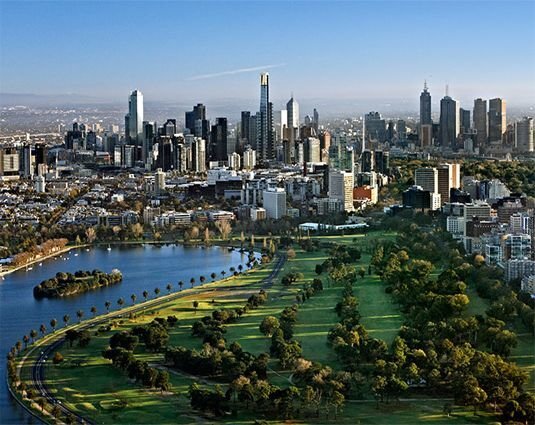Melbourne remains a serious focus for more even commercial and retail property investment and development into 2017. The prime locations for development or redevelopment are on the target list for investors locally - Provided by Melbourne Acquisitions
Prime Locations Dominate
A good property site in a prime location will always attract solid enquiry in Melbourne. Yields are likely to compress again this year on quality properties, and rental rates are well placed to improve in the prime precincts. The year has plenty of potential for good quality assets in 2017.
To help with all of this, the business sentiment in Victoria and Melbourne is strong and evolving. That has been underpinning advantages for new projects and established investments. Of course, investments and developments are ‘time critical’, so do your research if this is your ‘avenue’ of investment. You can on all indications, look to Melbourne to be an active property investment market in 2017.
Expected Trends
What are some of the other expected trends for commercial and retail property investment and development in Melbourne this year? Try some of these for starters:
Prices are expected to remain strong in both the CBD and Melbourne suburbs.
· Supply and demand indicators will always vary from suburb to suburb and region to region, but the early signs are good for positive activity.
· A tightening is expected with some of the lending institutions when it comes to lending policy and funds availability. Check with your lender early in the year on loan availability and flexibility in moving ahead. You want the best loan to suit the investment targets that you have into the future.
· Established developers and investors with lower lending ratios and established equity will continue to be quite active in the market. Good properties with an established ‘upside’ will usually create plenty of interest. Some transactions will occur ‘off market’ so be prepared for a good degree of ‘strategy’ if you are looking for something special in property and development.
· The buoyancy and activity of the business community in the CBD and the Melbourne suburbs are strong and doesn’t appear to be weakening; that strength should have a continued flow through to established segments of commercial or retail property.
· Vacancy factors in the older assets where improvements and or services are substandard are likely to increase. Property owners and investors owning those assets will be well advised to maintain their property competitiveness from a lease and occupancy perspective. Keep away from the vacancy problem by negotiating ‘keen’ leases early with sitting tenants.
· Newer assets are attracting solid enquiry as tenants and investors ‘upgrade’. That will remain the trend. The newer assets are showing good interest and are producing a fall in vacancy rates across the board.
· Tenants are selective in building or premises, and they are critical of high outgoings or those occupancy costs that are above the averages for the property type and the location. Building owners should keep controls on expenditure for the property type; it is best to stay within the known outgoings averages for the location.
So, there are some things to do here and study. When you find a property and or an opportunity, check it out comprehensively. Yields calculated against passing income and achievable prices should be assessed individually by location, property type, and future expected demand. Make sure that the rents are not ‘artificially inflated’ beyond the property market conditions. Assess all leases in a tenancy mix for cash flow, stability, and risk.
History Matters
Look at the history and property trends in any location to see what has been happening with other properties and other developments over time. Understand the demographics and the business sentiment for the location where you may be considering a development or purchase. The history of property activity in the area will assist you to plan the future of development.
Gathering Information
So how can you get the information that you need for 2017? Do your research early for any of your priority locations in greater Melbourne, and particularly focus on those that suit your budget.
Closely watch the market trends; look for the prime properties and the ideal locations so that you can shorten your target list. Suburbs such as Richmond, Camberwell, Collingwood, Port Melbourne, and Hawthorn are quite active with enquiry now and will remain so. They are prime spots for investment providing you can afford the asking prices and loan exposure.
Local Property Advice
It is always a good idea to work with specific local property agents and brokers that understand the strategies and the systems behind property development. They will know their suburbs, and they will know the levels of enquiry within those suburbs. They should have databases for locations and covering qualified buyers, tenants, and businesses. They will know about supply and demand.
Broker information is valuable for every developer or investor as they plan a building modification or redevelopment. Those active local agents and brokers will also know the margins that apply to development and building costs today. So, ask the questions to get you investment plans and development ideas under control. It is worth remembering that many transactions occur off-market through brokers matching sellers and buyers. A good broker will do that for you.
Suburbs, Streets and Zones
Research is a special process when it comes to commercial and retail property; do the research yourself and ask plenty of other questions as you gather the information. Choose the streets, suburbs, and property types that you think can match your development or redevelopment needs; then look at the municipal zoning plans for the ideal locations by suburb, and check out the rules applying to each zoning category. Property use and zonings need to be compliant.
Looking Ahead
So, 2017 will very likely be a good year for commercial and retail investment property development and investment in greater Melbourne from what we are seeing. We expect the city and the suburbs to remain active from an enquiry perspective. Redundant properties are being redeveloped and rejuvenated for a new target market. New properties prepare for future expected demand.
What are investors and developers looking for this year? For starters, here are the most common requests we are hearing:
Properties located on the main traffic corridors leading out of the CBD
Assets around the transport hubs
· Redundant properties reaching a point of redevelopment or change
· Vacant land in the newer fringe suburbs for ‘greenfield sites’
· Properties in the high growth corridors
· Groups of retail properties in strips along main roads
· Assets with a quality tenancy mix and sound income stream
Checks and Balances
Everything comes down to the ‘affordability’ equation in investment and property development. Consider the development acquisition costs, the costs of the project, the target market, and the realistic margins to be achieved on the development.
Churn and Change
Melbourne remains an active city for both opportunity and property churn over the coming year, so do your homework, and set your plans in motion. When you shortlist your investment targets, the locating of suitable properties gets a bit easier.
If you are looking to undertake a new property development soon, then it pays to set a few targets and plans now in preparation for the correct site acquisition and project plan. You could say that it is a bit like creating a ‘checklist’ for that purpose. To do that, consider these facts with others in your planning process:
1. Site elevations and surrounding view – a successful development is usually one that people and businesses would be proud to occupy; elevation and business image are important. That desirability factor also makes the marketing of the project that bit easier. Look at the site from that visual perspective. Will the site bring a degree of ‘class’ or ‘presence’ to the businesses considering purchase or occupancy? Can you use that in your marketing?
2. Competition properties and adjacent properties – surrounding business and the overall precinct will have some influence on your target market; so, check that out and note the competing listings as well.
3. Exposure for branding and signage – specific design elements attract occupancy, inspections, and enquiry. The same can be said for branding, naming rights, and architectural design. Consider the aspects of naming rights, as well as the ways of providing individual tenant branding on the property and at the roadside. In any retail investment, the branding requirement is critical to ongoing business for tenants. Check out similar properties nearby to see what branding and naming rights are utilised.
4. Floor plates – look at the building design elements and floor plates from the perspective of a buyer or occupant. Most tenants today like to consolidate their business operations to a single level of a building or premises of occupation; design consultancy allows that efficiency. The floor plates should be ‘affordable’ in both rent and price; size matters when it comes to rental affordability. Don’t forget to assess outgoings costs per unit of area, as you will very likely want to recover those costs in any lease situation. Don’t forget to ensure that those costs are affordable for buyers and tenants. A building with high rental and outgoings costs will likely remain vacant for a longer period.
5. Light and energy – most property tenants and buyers today are very critical and selective when it comes to occupancy costs and energy saving initiatives. A building design should be optimised for that focus. Air conditioning, lighting, plant and machinery, common areas, tenant areas, and the costs of peak power cycles will all be considerations in energy optimisation.
6. Separations – when you look at a potential asset and its layout, consider how you can separate the working elements in the property such as car parks, loading zones, basement facilities, tenant areas, and common areas. Visual appeal is important in property function and design, so the car park areas and the loading zones should be isolated at the back of the building or underneath in the basement. The frontage of the building should be reserved and designed for rental optimisation with well-placed tenants.
7. Security – determine the types of tenants you expect to place in your new property or finished development. The aspects of security required for each tenancy type can be different. A modern building will have security and safety features. Determine the tenancy types that you will be placing into the building, then match the security design and safety issues into the building and to that expected tenancy placement.
8. Roads and transport – the proximity of the site, building or new development to the main roads and passing traffic is important. Perhaps the transport corridors will allow some marketing advantage. Look at how people can get to and from the property conveniently and efficiently. Will you need to apply for some special road access or traffic light modifications?
So, all of these factors can help you as you plan your next property purchase and development in Melbourne. The key message here is to set your targets, research the market, and set your plan of purchase in momentum. Get a good commercial broker or agent to help you with that.
Content provided on behalf of Melbourne Acquisitions
Image Courtesy: www.invest.vic.gov.au










